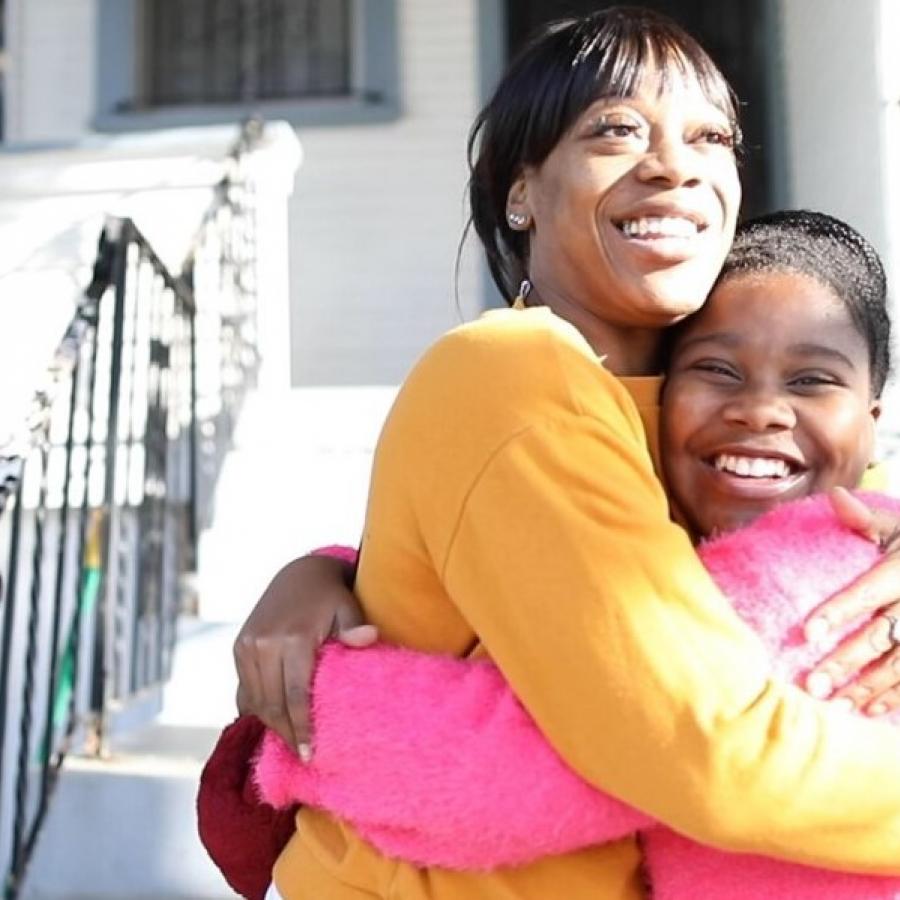Denise Fairchild: Building a Movement for an Equitable Clean Energy Economy
By Courtney Hutchision
This hurricane season — one of the most virulent in decades — has made it impossible to ignore the disparate impact that our shifting climate has on low-income communities and communities of color. At the same time, the current administration is attempting to roll back environmental protections, and double down on fossil fuels that will only exacerbate the nation’s environmental woes.
Too often, these interconnected realms of environment, energy, economy, and social justice remain siloed, making it difficult for advocates to see their common ground and common struggle. In Energy Democracy: Advancing Equity in Clean Energy Solutions, president & CEO of Emerald Cities Collaborative Denise Fairchild, along with co-editor Al Weinrub, weave together the insight of leading experts from across sectors, putting forth a holistic, systems-changing vision of an equitable energy future.
Fairchild, whose organization advances environmental solutions that support an equitable economy, spoke with America’s Tomorrow about “energy democracy” and how advocates working in the environmental, racial justice, and economic sectors can help America move toward a more equitable energy future.
Many of our readers are familiar with environmental racism and the ways in which pollution and climate threat have a disparate impact on low-income communities and communities of color. The notion of “energy democracy” goes beyond disparate impact, however, to re-envision who owns the fuel economy and how it is used. Can you give us an overview of what you mean by energy democracy?
Energy democracy is an emerging concept that pushes us beyond the movement for 100 percent renewable energy toward a system that is not only clean but also non-exploitative and democratic. Essentially, we’re asking the question: how do we move to a clean energy future while keeping racial, social, and economic justice at the forefront? This means that our clean energy future should not exploit or harm the environment and our natural resources, and it should not exploit or damage the communities that have been negatively impacted by our past and current energy choices. It also means we need to focus on the use value of renewable energy, not its commodification. We do not want to move into renewable energy and just see the same old patterns of monopolization and concentration of wealth and ownership in the hands of the few. The energy democracy draws on a more indigenous tradition that sees our energy resources as part of the commons — it belongs to everyone and it should benefit everyone. That doesn’t just mean equitable distribution of the energy itself, but equitable distribution of the jobs created in the new energy economy, the resources needed to capitalize economically on renewable energy sources, and the investments that could be made to rebuild under-resourced communities. Right now, the renewable energy economy — though better for the environment — is poised to be just as extractive for low-income communities and communities of color. These populations are more likely to rent and hence have little to no control over whether their buildings use renewable energy sources. Purchasing solar panels are expensive and require a credit score in many instances, putting them out of reach for those who have historically been underserved by banking systems. So there’s a legacy of divestment that has taken place in our communities that’s impacted our bankability, our credit, and our housing, and that bleeds over into whether or not we’re going to be able to participate in and benefit from a clean energy future.
What led you to write this book?
We wrote the book to build a movement, to be perfectly honest. We knew there were strands of this work taking place, but we wanted to nurture this fairly nascent movement to tie the strands together. We know that a clean energy economy will drive the 21st century economy. Just like agriculture economy gave way to the industrial economy, we are now in an economic transition and it’s imperative that we ensure that communities of color and low-income communities, which have been on the margins of economic life in the past, are full beneficiaries in this new economy.
In this book, we lay out how people can join the movement at the policy level, because in every state across the country, state government and public utilities are in conversations about what the new energy future will look like. This is probably the last time in the next 50 to 100 years that we will have the opportunity to change our energy infrastructure in a way that benefits the communities that matter to us, so we need to be in those conversations and bring that racial justice and social justice frame. We also provide examples of how people can join the movement at the organizing and leadership level, and make the case for building capacity and knowledge around these issues across multiple sectors in social justice. Advocates sometimes have difficulty seeing how energy relates to racial or economic justice, but at the end of the day it’s about people who have to take their kids to the hospital again and again for asthma because of where polluting sources are placed, or household budgets stretched tight because of rising utility bills. There are so many communities out there finding new, equitable solutions and doing it their own way, and we wanted to create a resource that brought all that together.
The book has some truly bold and transformative ideas, such as changing the constitutional definition of private property, building collectively-owned utilities, or challenging global trade agreements. Given that the current administration has sought to scale back environmental protections and reinforce a capitalistic and extractionist energy economy, where do you see opportunities for the energy democracy movement to push for reform?
This work is really about a revolution. It’s going to take long-term collaboration on many fronts: legal, community organizing, and alternative energy solutions. This book provides different frameworks and perspectives on how we win this war, one battle at a time. The struggle around profit, power, and privilege as embedded in our current administration has ramped up the opposition to this movement, but there are reasons to be optimistic. The utility sector and private sector know that the fossil fuel economy is over. Renewable energy technology has become cheaper than fossil fuel and so the business model is going to have to fundamentally change. But just because we have the technology, everyone thinks that will solve all the problems; but this struggle is really about these larger racial justice issues. The new technology makes it so we don’t have to replicate a centralized system, we can have a distributed energy system that’s much more local and can be community-owned and community-run.
For example, the book showcases a Washington, D.C. community that, concerned about the environment and rising utilities bills, banded together to form an energy cooperative. Using bulk purchasing of solar panels, they helped dozens of households install technology that allows them to fuel their own households and reap the profits made from selling extra energy back to the grid. These organizers formed the DC Solar United Neighborhoods, helping neighborhoods across the city form similar coops and today this model has been replicated in Florida, Maryland, Ohio, Virginia, and West Virginia. So even in a federal political climate like we have, these changes can happen neighborhood by neighborhood, community by community.


